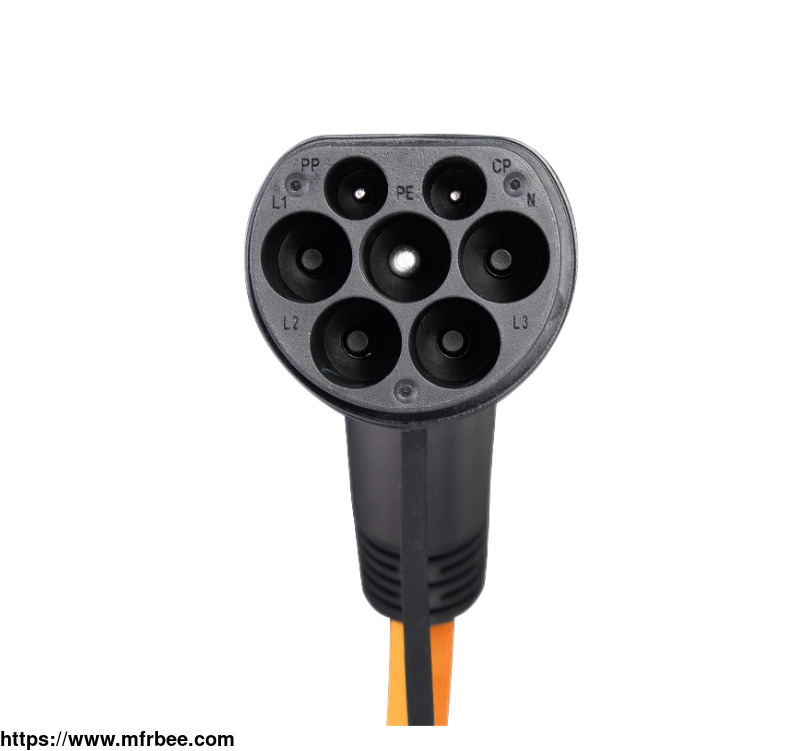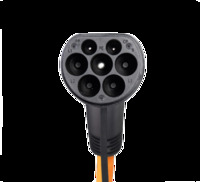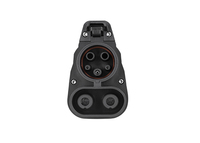EV Charging Connector
Product Quick Detail
- FOB Price
- USD $100.00 / Piece
- Minimum Order
- 100
- Place Of Origin
- China
- Packaging
- N/A
- Delivery
- 30 days
Specifications
The charging plug in another word is the charging interface of the electric vehicle. This car charging connector is classified into DC charging and AC charging interface according to the current
and voltage. And the difference between AC charging connector and DC charging connector is shown below.
EV Charging Connector Types
AC Charging Connector
The usage of AC charging plug is to supply power to the vehicle charger with low-speed charging. The environment of use is usually at home, work places and destination.
DC Charging Connector
DC charging plug is used to charge the battery with fast charging technology. The feature of DC charging plug is stable, high voltage, high current, and it comes with temperature protection device.
DC Vehicle Charging Socket
DC combo vehicle charging socket is possible to charge all types of electric vehicles from low-power to high-power charging. Vehicle charging sockets were originally developed for car manufacturers
and are already used in the new generation of electric vehicles. The temperature sensor model can be adjusted according to customer needs.
First of all, charging plugs are divided into DC charging plugs and AC charging plugs. DC charging plugs are also high-current, high-power charging plugs, which are generally equipped with fast
charging stations for new energy vehicles. Households are generally AC charging piles, or portable charging plugs.
AC charging connector
Mainly divided into three types, type1, type2, GB/T.
①Type1: SAE J1772 interfac
The United States, South Korea, Japan and other some countries mainly use Type 1 charging cables, including portable charging cables carried by AC charging piles along with the car. Type1 provides
mainly two charging voltages of 120V (Level1) and 240V (Level2).
②Type2: IEC 62196 interface
Type2 is the new energy vehicle interface standard in Europe, and the rated voltage is generally 230V. Looking at the pictures, it may look a bit like the national standard, but it is easy to
distinguish. The Type2 which is the opposite of the GBT.(Female to male)
③GB/T: GB/T20234 interface
From January 1, 2016, China stipulates that as long as the charging interface of all brands of new energy vehicles produced in China must meet the standard GB/T20234. The rated voltage of the
national standard AC charger is generally 220V household voltage.
DC charging connector
DC charging plugs generally correspond to AC chargingplugs, and each region has its own standards. Japan's DC charging plugs interface is CHAdeMO. Since the rated voltage of DC charging piles is
generally above 400V, and the current reaches hundreds of amperes, so generally speaking, they are not for household use, and only fast charging stations such as shopping malls and gas stations can
be used.
How does an EV Charging Connector Work?
Household AC slow charging is based on the current residential power supply system (using single-phase 220V or three-phase 480V) and uses a charger of 5-22kW power range. OBC will convert household
AC to DC so as to charge the battery of the car.
Differences Between Type 1 And Type 2 Ev Connectors
The difference in appearance is the number of jacks. The American standard AC is usually five holes, and the European standard is seven holes.
From the interface point of view, the so-called "Type1" refers to the SAE J1772 AC charging standard. The "type2" refers to the Mennekes Type 2 interface adopted in Europe. The most obvious
difference in shape between these two standards is the number of "jacks"."Jack" is the +&- of the charging interface, Each "jack" does its own job. But it does not mean that each of them
is responsible for the transmission of current. SAE J1772 is just a general term. It includes 4 subdivision standards and 3 different charging interface shapes. Among them, the AC charging standard
and the DC charging standard are respectively divided into two specifications, Level 1 and Level 2, and these two specifications are mainly different in output power. Another is called the Type 2
charging standard, which corresponds to theType 1.
EV Charging Connector Advantages
Conform to the global regulation standard, to ensure the safety connection between charging plug and station.
Meet the ergonomic design, friendly to users
Apply rubber material with better friction.
For more information about pins and connectors and energy storage connector, please feel free to contact us!
- Country: China (Mainland)
- Founded Year: 2019
- Address: No.55 Innovative platform, Shaohua Gongfang, Pingliang Dajie, Jianye District, Nanjing
- Contact: au pins










